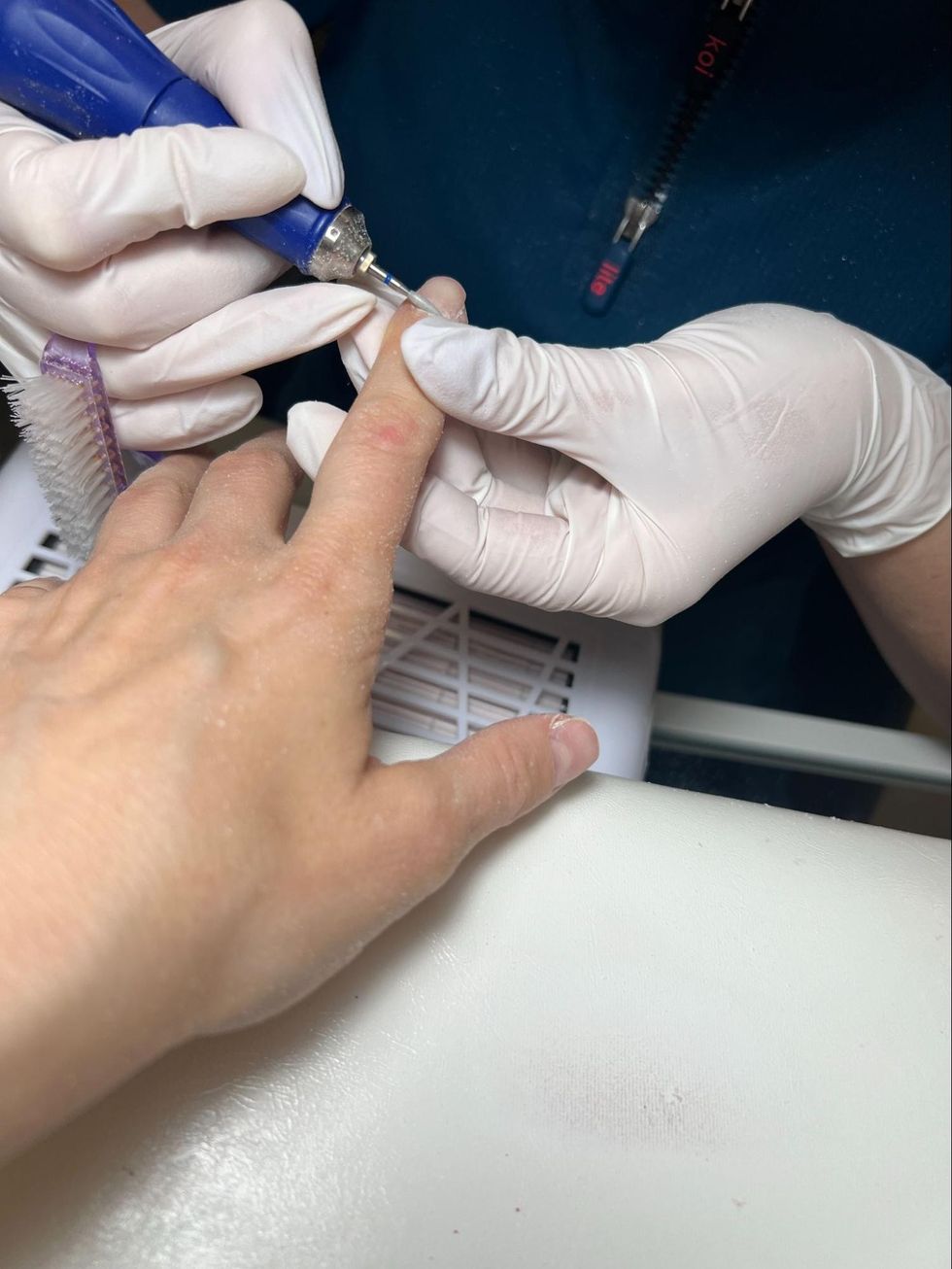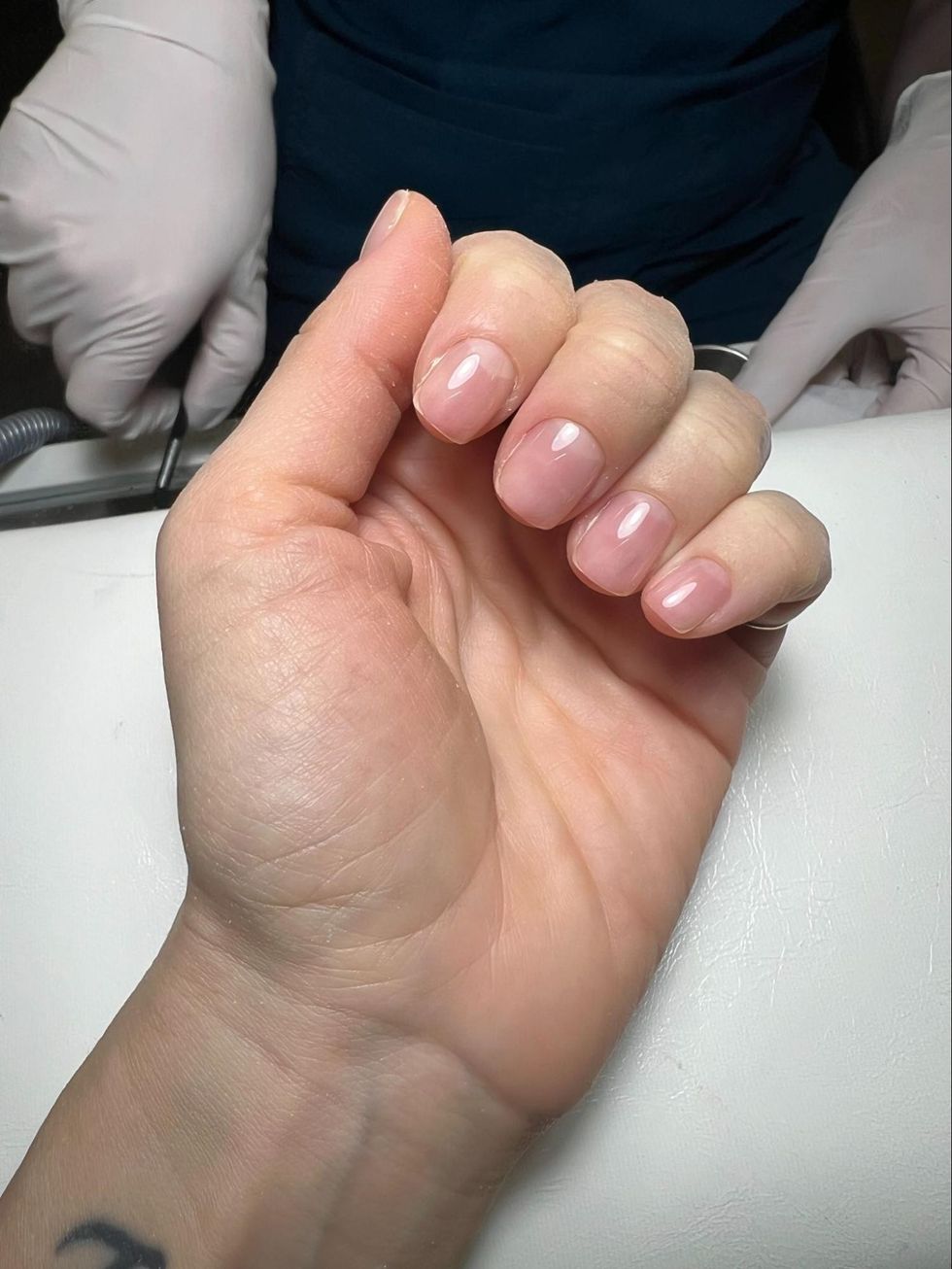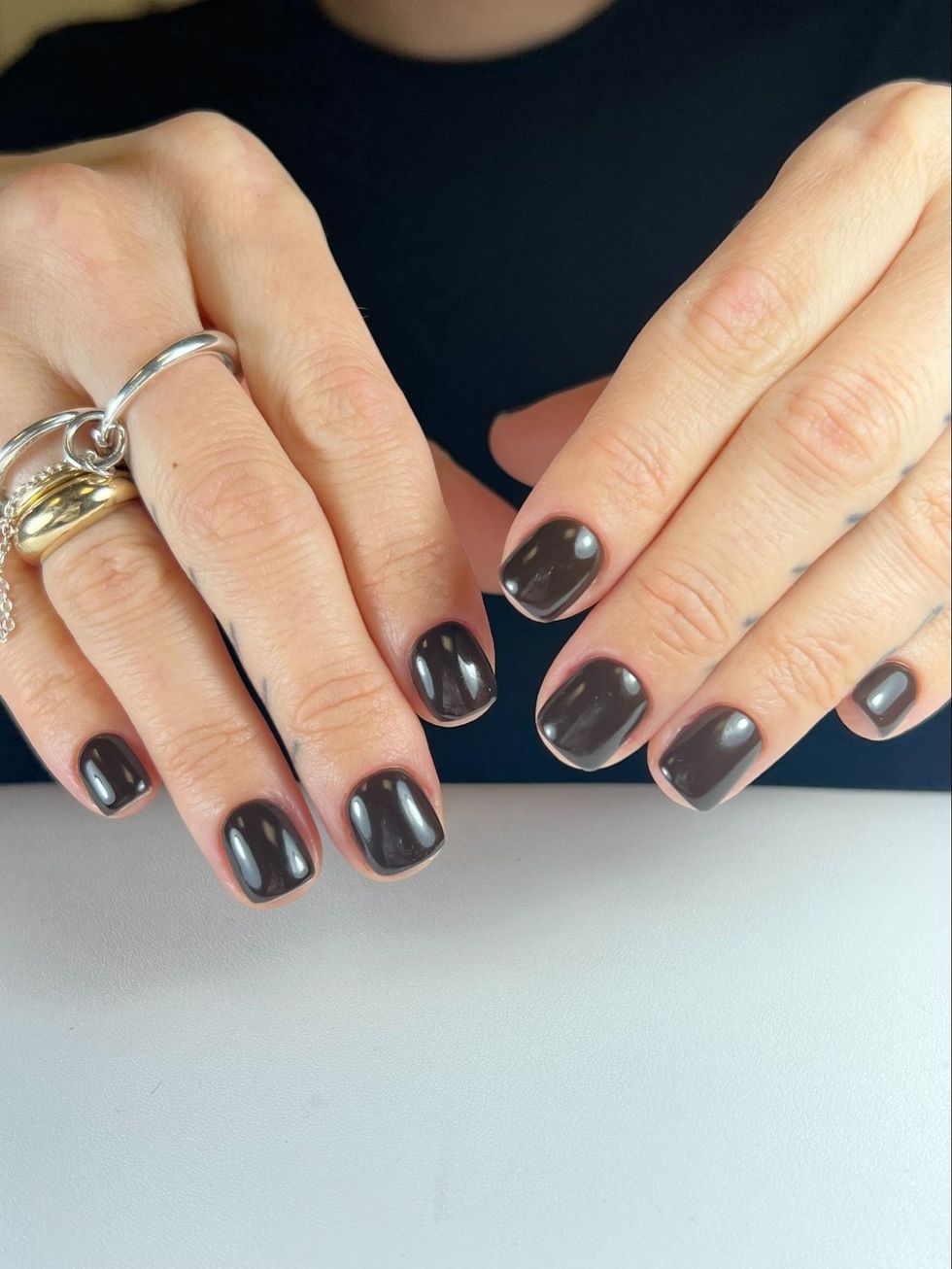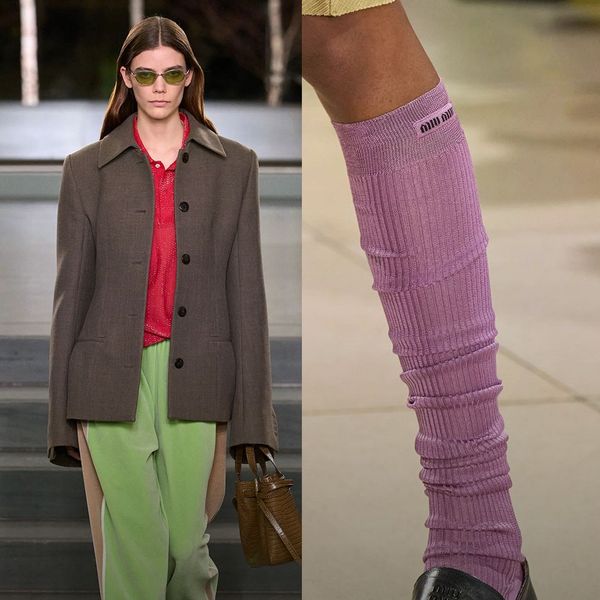Would You Pay $100 to Get Your Cuticles Removed?
An investigation into “the Russian manicure.”

The Russian manicure is visual perfection with no cuticle in sight; it is almost as if it was created specifically for social media. As is the case with most social media trends, controversy tends to be attached, and this manicure technique is no exception. While the Russian manicure is by no means a new trend—having originated in Russian-speaking countries, its exact date of origin is not specifically known—it's now having its moment in the spotlight.
As someone who is admittedly obsessed with their nails and curious to try out the trend, I decided to do a deep dive into the Russian manicure to see if it actually lives up to the hype. Ahead is a rundown on exactly what a Russian manicure is, my experience testing it out, and more.
What Exactly is a Russian Manicure?
For the unacquainted, a Russian manicure is a specific technique in how the nail is prepped for a manicure rather than a specific nail design. “A Russian manicure, also called an E-file manicure, is a dry manicure—no soaking—with an emphasis on complete cuticle removal and intricate attention to polish application,” explains Dr. Dana Stern, MD, a board-certified dermatologist, nail specialist, and founder of Dr. Dana Nails.
Drill-like tools, called “bits” or sometimes scissors, are used to remove the cuticle and the skin surrounding the nail. What’s the deal with removing all this skin? Well, it’s “to thoroughly remove dead skin in the area,” says Dr. Hadley King, MD, a board-certified dermatologist specializing in medical and cosmetic dermatology in New York City, so the nail has a clean, smooth look. “Abrasive brushes are also sometimes used for intense exfoliation,” says Dr. Stern. This intense exfoliation, in very un-scientific terms, is what makes the manicure look perfect and, thus, very social media-friendly.
“By essentially removing all excess skin around the nail bed, a breach occurs in the protective membrane, allowing the manicurist to paint polish under the proximal nail fold, causing the manicure to last much longer than a traditional manicure,” explains Dr. Dendy Engelman, MD, FACMA, FAAD, a board-certified cosmetic dermatologist and Mohs surgeon at Shafer Clinic in New York City. How much longer, exactly? A Russian manicure lasts up to four weeks, but you have to put in the time: Expect to spend up to two hours with your manicurist.
So, What’s the Controversy?
So, the Russian manicure drama is centered around the cuticle. “The eponychium [the skin at the base of the nail] and the cuticles help to seal the transition zone between the skin and the nail. This barrier helps keep out microbes and irritants and helps to seal in moisture,” says Dr. King. The Russian manicure essentially destroys that barrier—in the name of beauty—leaving your nails open to bacteria and other pathogens that could penetrate the skin around the nails and cause an infection.
“Complete removal of the cuticle, if done repetitively, will usually result in the entry of yeast, which results in a type of nail infection called a chronic paronychia,” explains Dr. Stern. “Many of the images that I have seen on social media that are posted to flaunt beautiful nails, in fact, show nails with evidence of chronic paronychia. While the polish may look impeccable, to the trained eye, I see signs of infection: puffy, pink, and swollen nail folds.” Dr. King stresses how important it is to keep the skin around the nails well moisturized to help optimize the skin barrier and prevent infection.
Don’t fret because not all hope is lost: With a highly experienced nail tech, one who has performed this very specific nail technique for years and who abides by all hygienic standards and utilizes “immaculately sterilized” tools, as Dr. Stern says, your experience should be a very rewarding one. And by rewarding, I mean you’ll leave with a manicure you’re obsessed with.
How Much Does a Russian Manicure Cost?
A Russian manicure doesn’t come cheap—depending on where you live, you can expect to pay around $100, and with add-ons, like nail art or nail extensions, you’ll have to pay even more. Additionally, some nail salons may charge more depending on the expertise level of the manicurist. But keep in mind that because a Russian manicure lasts longer than a typical manicure, you might end up actually saving money because you’re going to the salon less often.
My Experience
After some intensive online research, I booked an appointment for my Russian manicure at the very clean and meticulous Marcela Nails NYC. You can opt for regular or gel polish for your Russian manicure; I went with UV gel—my go-to. Before the actual Russian manicure process began, owner Margarita Kovaleva removed the existing gel polish on my nail with a drill. “I’ll leave about 10 percent of the gel polish on the nail so the drill bit doesn’t damage the nail,” explained Kovaleva as she worked on my nails. “Then, we file the nails into the client’s preferred shape and push the cuticle back.”
Next, Kovaleva used scissors to clean up my cuticles before removing the skin around and underneath my cuticles with another drill bit. Throughout this process, Kovaleva used a brush to buff my nails. After Kovaleva filed my nails the way I like them—short and square—it was time to add a rubber gel base. (This is what gives the Russian manicure the incredibly smooth finish it’s known for.) The shorter the nails, the harder the base material should be, explains Kovaleva.

Bye, cuticles!!

After the lowkey painful rubber base application.

The final result.
Kovaleva cleaned my nails with an alcohol wipe and got to work. While she applied the rubber base on each nail, I placed my hand underneath the UV gel lamp a total of 10 times—one time for each nail. To be honest, it didn’t feel entirely comfortable. I unexpectedly winced in pain during this process, but Kovaleva assured me that sensation was normal and it simply meant that the rubber base was hardening.
After the mini-torture session, Kovaleva applied two coats of polish before she finished off with a gel topcoat and some cuticle oil. My nails looked, for lack of a better word, incredible. And after two weeks, they were still in tip top shape. So, yes, there are risks associated, but if you find the right nail tech, I’d highly recommend booking an appointment. It’s definitely worth the money.




